How to Choose IP Ratings for Waterproof Stage Lighting
- Selecting the Right Protection for Outdoor Stage Lighting
- Understanding the IP Code for waterproof stage lighting
- Breaking down the IP code: what waterproof stage lighting buyers must know
- Common IP ratings and practical guidance for waterproof stage lighting
- Why IP rating alone is not enough for waterproof stage lighting
- Moving head fixtures and the limits of waterproof stage lighting
- Materials, seals and connectors: the unsung heroes of waterproof stage lighting
- Testing, certification and verifiable durability for waterproof stage lighting
- Cost, maintenance and lifecycle considerations for waterproof stage lighting
- Selection checklist: choosing the right IP for your waterproof stage lighting project
- LQE: Manufacturer capabilities for waterproof stage lighting and why it matters
- Case examples: applying IP guidance to real-world waterproof stage lighting
- Final recommendations for buyers of waterproof stage lighting
- Frequently Asked Questions about waterproof stage lighting
- 1. What IP rating is best for outdoor waterproof stage lighting?
- 2. Can moving head lights be truly waterproof?
- 3. Should I use waterproof connectors for outdoor waterproof stage lighting?
- 4. Does a higher IP rating always mean a longer fixture life?
- 5. How often should waterproof stage lighting be inspected?
- 6. Are IP ratings standardized globally for waterproof stage lighting?
- Contact and product inquiry
Selecting the Right Protection for Outdoor Stage Lighting
Understanding the IP Code for waterproof stage lighting
When you specify waterproof stage lighting for outdoor festivals, architectural façade work, or wet indoor venues such as churches and pools, the first technical decision is the IP rating. The IP (Ingress Protection) code is an internationally recognized shorthand for how well a fixture resists solids (like dust) and liquids (water). Choosing the correct IP rating is not only about keeping water out; it affects performance, cooling, maintainability, warranty, and cost.
Breaking down the IP code: what waterproof stage lighting buyers must know
The IP code normally has two digits: the first for solids and the second for liquids. For example, IP65 means level 6 solid protection (dust tight) and level 5 water protection (water jets). For waterproof stage lighting this is the single most important label when discussing field deployment. The IEC specification behind the code is IEC 60529, which defines test conditions and acceptance criteria used by manufacturers and test labs.
Common IP ratings and practical guidance for waterproof stage lighting
Different venues and applications demand different levels of protection. Below is a concise comparison to help you match fixture type and location to a reasonable IP target.
| IP Rating | Ingress Protection | Typical suitability for waterproof stage lighting |
|---|---|---|
| IP44 | Protected against objects >1mm; splashing water | Indoor venues with occasional moisture (dance floors, near entrances). Not ideal for open-air stages. |
| IP54 | Limited dust ingress; splashing water from any direction | Covered outdoor stages or partially sheltered applications where heavy rain is unlikely. |
| IP65 | Dust tight; water jets from a nozzle | Most common for outdoor fixtures and wash lights. Good balance of protection and cooling. |
| IP66 | Dust tight; powerful water jets | Exposed outdoor stages with frequent heavy rain or splash hazards (near water features). |
| IP67 | Dust tight; immersion up to 1m for 30 minutes | Rarely necessary for rigging, but valuable for connectors, outdoor ground fixtures, or temporary submersion risk. |
| IP68 / IP69K | Continuous immersion / high-pressure, high-temperature washdown | Industrial washdown environments (theme parks, outdoor installations subject to cleaning trucks). High cost and limited selection for moving heads. |
Source of definitions: IEC 60529 and industry testing practice. Match the IP rating to the realistic exposure risk rather than choosing the highest rating by default — higher ratings usually raise cost and complicate thermal management.
Why IP rating alone is not enough for waterproof stage lighting
IP is necessary but not sufficient. For stage lighting you must consider mechanical movement, heat dissipation, connectors, local corrosion (salt-air environments), and optical performance. For example, sealed enclosures that achieve IP68 may trap heat and reduce LED lifetime or force derating. Conversely, a fixture with IP65 breathers or Gore vents can maintain IP protection while allowing pressure equalization to avoid condensation.
Moving head fixtures and the limits of waterproof stage lighting
Fully waterproof moving head lights are rare because motors, bearings, and pan/tilt slip rings often require careful ventilation or special sealing that adds cost and weight. If you need moving head fixtures for outdoor use, consider these approaches:
- Choose IP-rated moving heads (typically IP65) designed with sealed gearboxes and specialized cable routing.
- Use protective rain covers, housings, or local canopies to reduce direct exposure while avoiding overheating.
- Deploy static IP-rated wash/profile lights for the elements that require the highest water resistance, and keep moving heads in sheltered positions.
Materials, seals and connectors: the unsung heroes of waterproof stage lighting
Corrosion-resistant materials, proper gaskets, and IP-rated cable glands make the difference between a fixture that lasts two seasons and one that lasts a decade. For outdoor waterproof stage lighting look for:
- Housing materials: die-cast aluminum with corrosion-resistant finishes, or marine-grade stainless steel for harsh salt-air sites.
- Gaskets and seal design: continuous, molded gaskets and double-lip seals at all service points.
- Breather vents: hydrophobic vents (e.g., Gore vents) to control condensation without sacrificing IP protection.
- Connectors: IP67 or IP68-rated power and data connectors (Neutrik, Amphenol). Avoid unprotected XLRs outdoors; use dedicated waterproof DMX/ethernet connectors.
Testing, certification and verifiable durability for waterproof stage lighting
Ask manufacturers for independent test reports. Relevant tests include:
- IEC 60529 IP tests (performed by accredited labs)
- Salt spray / corrosion tests for coastal deployments (ASTM B117)
- Ingress tests after vibration and temperature cycling
Certificates and lab reports are verifiable proof that the product will perform under your conditions. When possible, request test reports for the specific model, not just generic statements.
Cost, maintenance and lifecycle considerations for waterproof stage lighting
Higher IP ratings generally mean more material, more complex assembly, and sometimes reduced cooling efficiency — all of which raise cost. Consider total cost of ownership rather than initial price:
- Installation costs: sealed fixtures may need specialized mounting or access for service.
- Maintenance intervals: IP-rated fixtures still require inspections for gasket compression, UV-degraded seals, and connector integrity.
- Replacement parts: modular designs with replaceable optics and LED engines reduce long-term costs.
Selection checklist: choosing the right IP for your waterproof stage lighting project
Use this checklist before you buy:
- Define exposure: direct rain, occasional splash, immersion risk, washdown.
- Match fixture type: moving head vs static wash/profile vs floor washer.
- Confirm IP rating and request lab test reports for the model.
- Verify connectors and cable glands are IP-rated and suitable for your control system (DMX, RDM, sACN, Art-Net).
- Consider thermal management and LED lumen depreciation specs at ambient temperature.
- Ask about warranty, spare-part policy, and local service options.
LQE: Manufacturer capabilities for waterproof stage lighting and why it matters
LQE was founded in 2008 and is headquartered in Foshan, China. We are a professional OEM/ODM stage lighting equipment manufacturer specializing in the R&D, production, and sales of middle- and high-end digital stage lighting. Our production base covers an area of about 10,000 square meters, has the ability to produce 100,000 lighting fixtures annually, and has 80 national patents.
Our product range includes waterproof stage lighting, beam moving head light, moving head hybrid light, moving head wash light, moving head profile light, LED effect light, LED studio light, LED par light, and lighting accessories. LQE focuses on high-quality materials, robust sealing systems, and IP-rated connectors to deliver fixtures suitable for theaters, concert stages, studios, broadcasting, religious spaces, exhibitions, nightclubs, leisure venues, and theme parks.
Why choose LQE for waterproof stage lighting:
- Scale and capacity: production capable of 100,000 units annually ensures supply reliability for large projects.
- IP and durability expertise: multiple patents and R&D resources dedicated to sealing, heat management, and long-life LED engines.
- Application breadth: product lines that cover both static and dynamic fixtures, enabling spec consistency across a venue.
- Service and value: commitment to first-class customer service while keeping competitive cost-effectiveness.
Case examples: applying IP guidance to real-world waterproof stage lighting
Example 1: Outdoor music festival main stage
You typically specify IP65-rated wash lights and LED pars for trusses and front-of-house, with IP54 fixtures used under partial canopies. Moving heads should be IP65 if exposed; otherwise, place them under small protective canopies.
Example 2: Theme park show with nightly washdowns
Use IP66 or IP69K for ground fixtures and façade lights that will undergo high-pressure cleaning. Choose sealed connectors and confirm salt-spray resistance if near the sea.
Example 3: Indoor aquatic center
Even indoors, choose IP65+ rated fixtures and corrosion-resistant materials due to humidity and chlorinated atmospheres.
Final recommendations for buyers of waterproof stage lighting
Start by assessing the real exposure profile of each fixture location rather than applying a blanket IP. Prioritize IP65 as a practical baseline for outdoor use, IP66 for heavily exposed locations, and IP67/IP68/IP69K for exceptional cases (immersion or heavy washdown). Always verify independent test data, consider cooling strategy, and select robust connectors and gaskets. For moving heads, prefer purpose-built IP-rated models or consider sheltering strategies to balance performance and cost.
Frequently Asked Questions about waterproof stage lighting
1. What IP rating is best for outdoor waterproof stage lighting?
For most outdoor stage applications, IP65 offers the best balance of protection, availability, and cost. Use IP66 for very exposed sites or close to water features. Reserve IP67/68/69K for immersion or industrial washdown needs.
2. Can moving head lights be truly waterproof?
Some moving heads are designed to be IP65-rated, with sealed gearboxes and special ventilation. However, fully submersible moving heads are rare. If you need dynamic fixtures outdoors, either choose IP-rated moving heads or protect the head with a canopy or enclosure designed to maintain adequate cooling.
3. Should I use waterproof connectors for outdoor waterproof stage lighting?
Yes. Use IP67 or IP68-rated power and data connectors and proper cable glands. Avoid open XLRs; consider sealed etherCON or waterproof RJ45 and sealed power connectors from reputable vendors.
4. Does a higher IP rating always mean a longer fixture life?
Not necessarily. Higher IP reduces ingress risk but can complicate heat dissipation. Choose fixtures where manufacturers demonstrate thermal management, corrosion resistance, and provide verifiable test reports for the specific model.
5. How often should waterproof stage lighting be inspected?
Inspect outdoor fixtures at least twice per season (pre-season and mid-season) and after severe weather events. Check seals, gaskets, cable entries, and look for corrosion or condensation. Clean and replace degraded gaskets as needed.
6. Are IP ratings standardized globally for waterproof stage lighting?
Yes. The IP (Ingress Protection) code is defined by IEC 60529 and used globally. Always confirm that test reports reference the IEC standard and are issued by accredited test labs.
Contact and product inquiry
If you need project guidance or product recommendations for waterproof stage lighting, contact LQE for technical support, sample testing, and OEM/ODM inquiries. Visit our product pages to view options including Waterproof stage lighting, beam moving head light, Moving head hybrid light, Moving head wash light, moving head profile light, LED effect light, LED studio light, LED par light, and lighting accessories. Our team can help select the correct IP rating, connectors, and installation strategy to match your budget and performance needs.
- Once you understand the basics of IP ratings, it’s important to know the difference between waterproof vs water-resistant stage lighting to make the right choice for your setup.
Why choose LQE as your stage lighting led supplier
The blinding stage lights Cost Guide | LQE Ultimate Insights
How to Choose the moving head light manufacturer and supplier in us?
The rgb par can lights Cost Guide | LQE Ultimate Insights
Distributor
Is there a minimum order quantity (MOQ) to become a distributor?
MOQ requirements vary based on the product line and market region. However, for long-term distribution partnerships, we are flexible and can start with a trial order to build trust.
1000w
What Kind of Certificates You Offer?
All kinds of certificates could be offered by LQE digital moving light factory, which depends on customer’s required, different pricing plan for different approval.
Do You Supply After-Sale Service?
LQE lighting offers 7x24 hrs systematic SOP customer support with dedicated personnel, ensuring quick and comprehensive assistance for stage lighting needs.
Does LQE Offer Customized Stage Moving Light Solution?
An experienced R&D team can provide customized digital stage lighting OEM/ODM solution service to meet clients’ unique demands from global markets, such as customized CRI parameter, Ingress protection rating, effect, etc.
What Is the Warranty Offered by LQE Lighting?
LQE lighting offers a comprehensive 1-year warranty and spare parts on its products, giving customers peace of mind and investment protection.

LED Moving Head Stage Wash Light LW200Z
The versatile moving head stage light provides a powerful lighting solution for theaters, concerts, and large outdoor performances. Suitable for theaters, TV stations, entertainment stages, and large outdoor performance scenes.

600w 19x40w RGBW Stage Moving Head Wash Light LW600 Zoom IP20
600W 19x40W LED RGBW Mulichips Moving Head Wash Lights with Zoom (5°–50°), Covering Large Range and Long Distance. IP20: Designed to deliver a 5°–50° ultra-large zoom range to achieve a greater wash effect, illuminating stages and events with stunning ring control lighting effects.
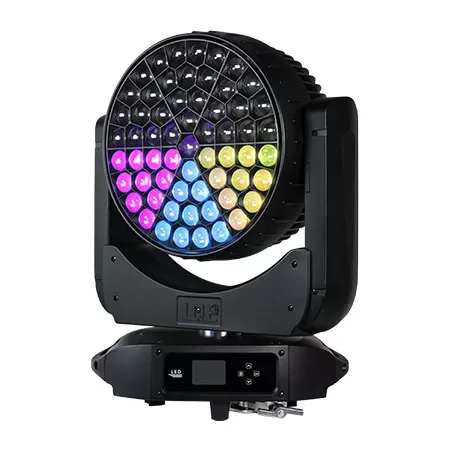
1000w 61x40w RGBW Stage Moving Head Wash Light LW1000
1000W 61x40W LED RGBW Mulichips Moving Head Wash Lights with Zoom (5°–50°), Covering Large Range and Long Distance. Designed to deliver a 5°–50° ultra-large zoom range to achieve a greater wash effect, illuminating stages and events with stunning lighting effects.
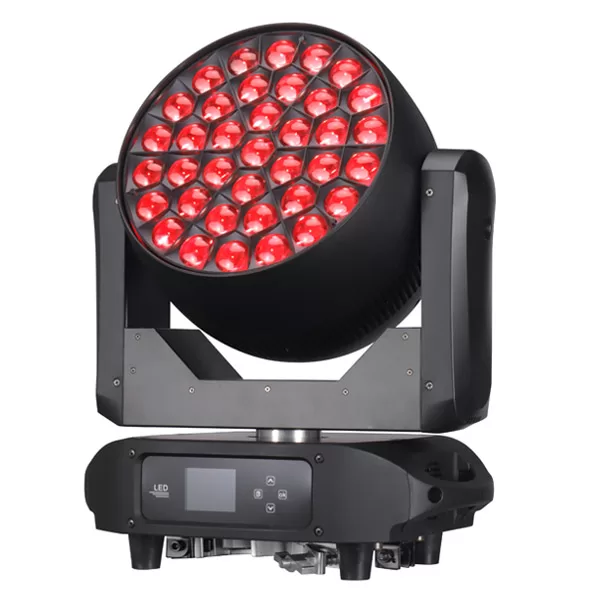
800w 37x40w RGBW Stage Moving Head Wash Light LW800
800W 37x40W LED RGBW Mulichips Moving Head Wash Lights with Zoom (5°-50°), Covering Large Range and Long Distance. Designed to deliver a 5°–50° ultra-large zoom range to achieve a greater wash effect, illuminating stages and events with stunning ring control lighting effects.

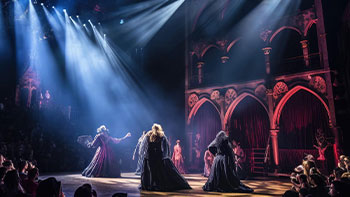
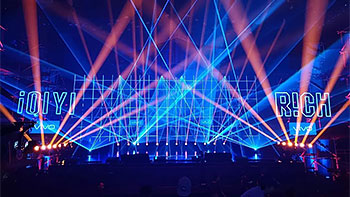

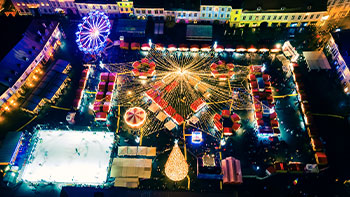








Linkedin
YouTube
Whatsapp: +8618924548390
TikTok